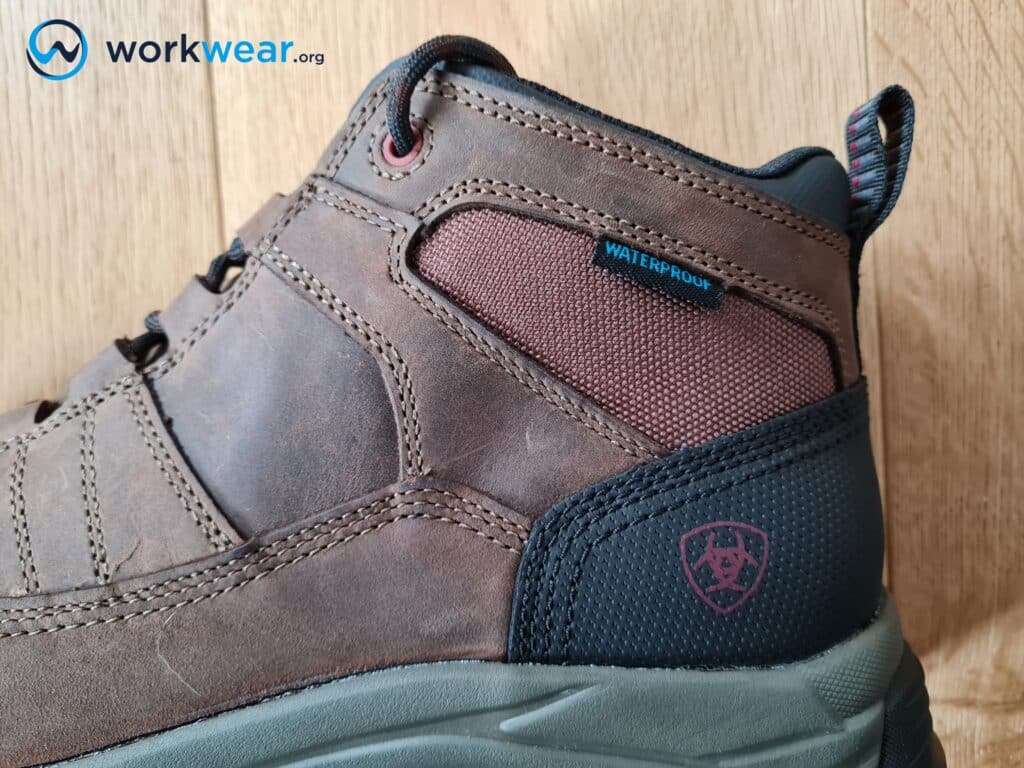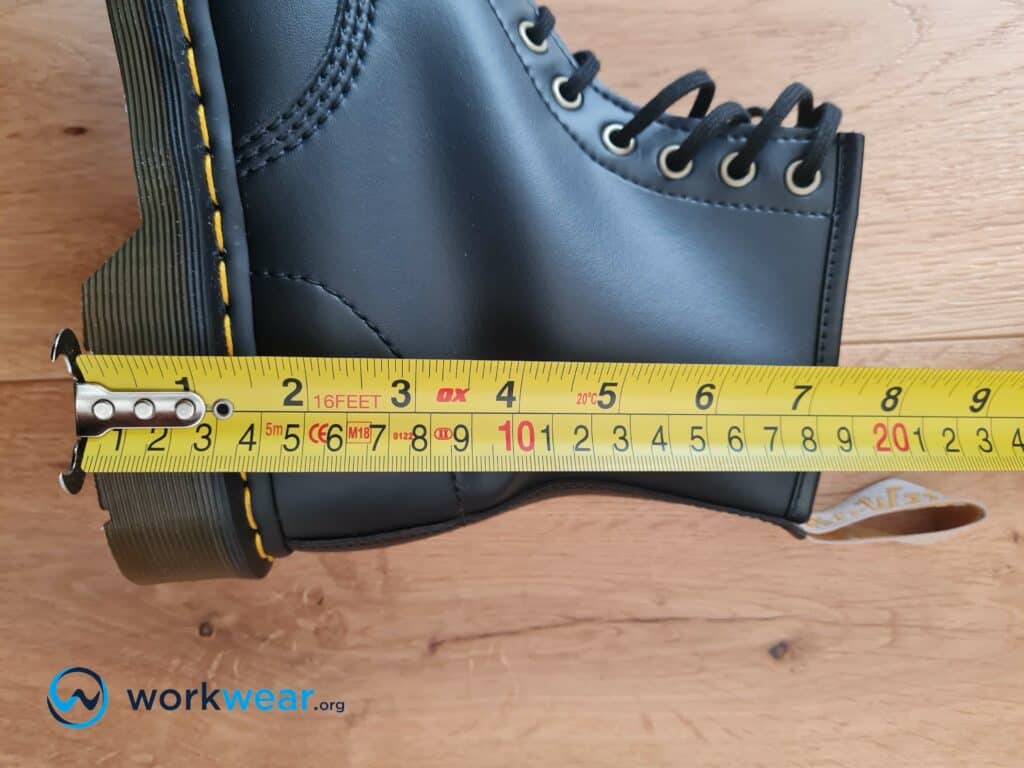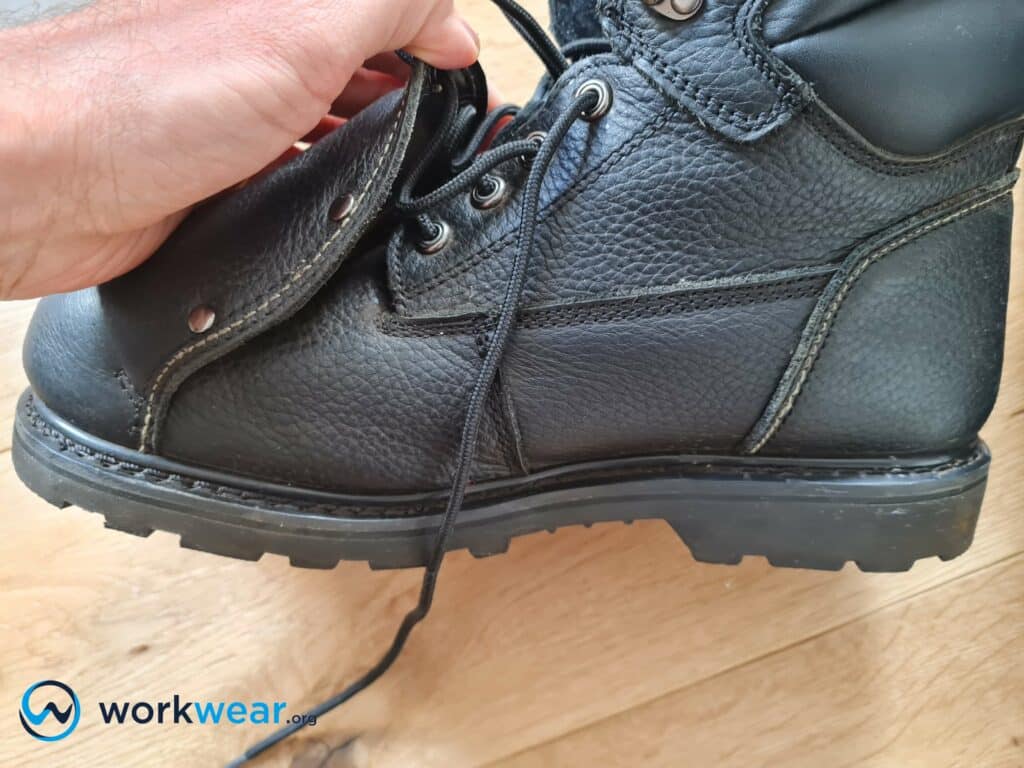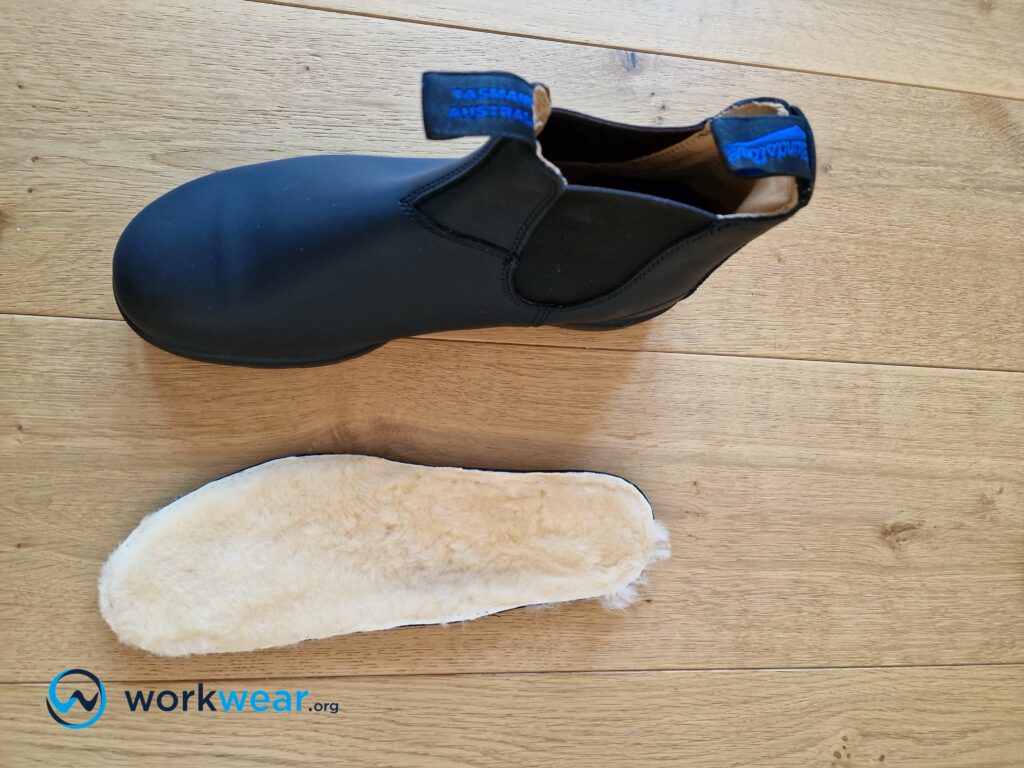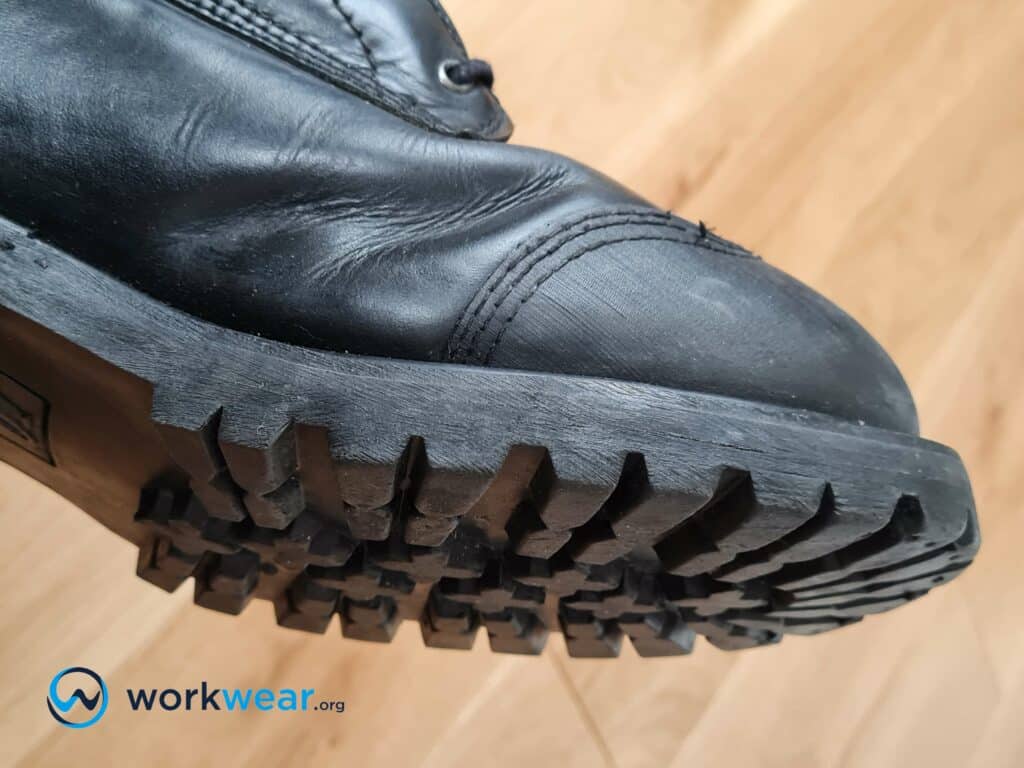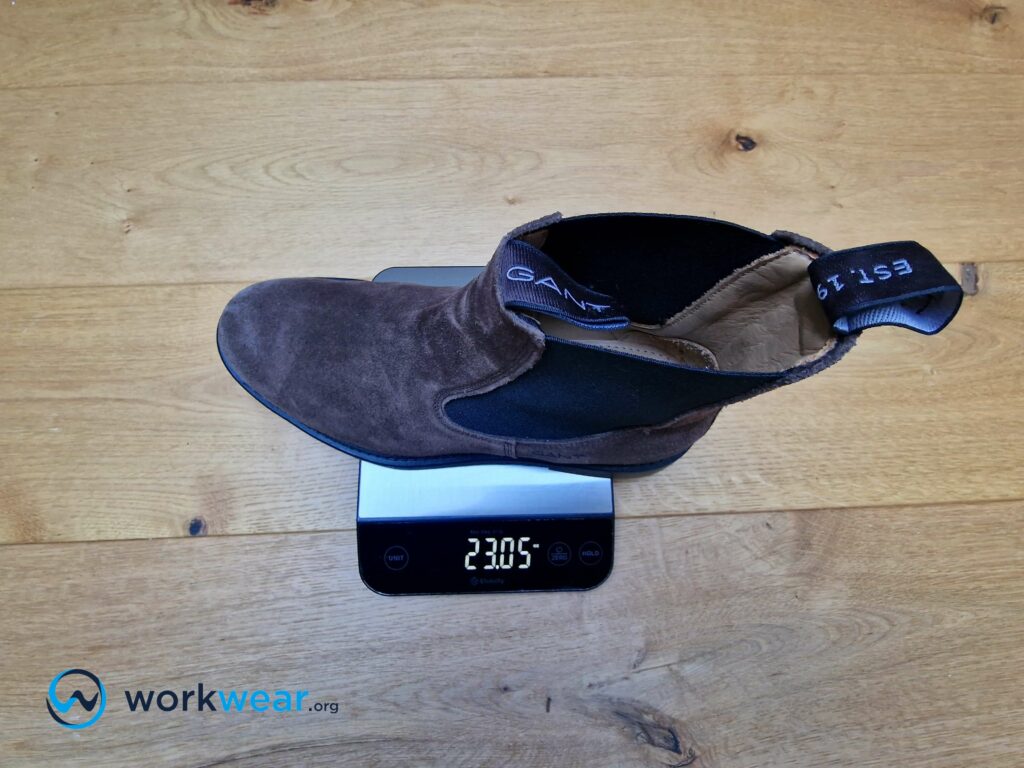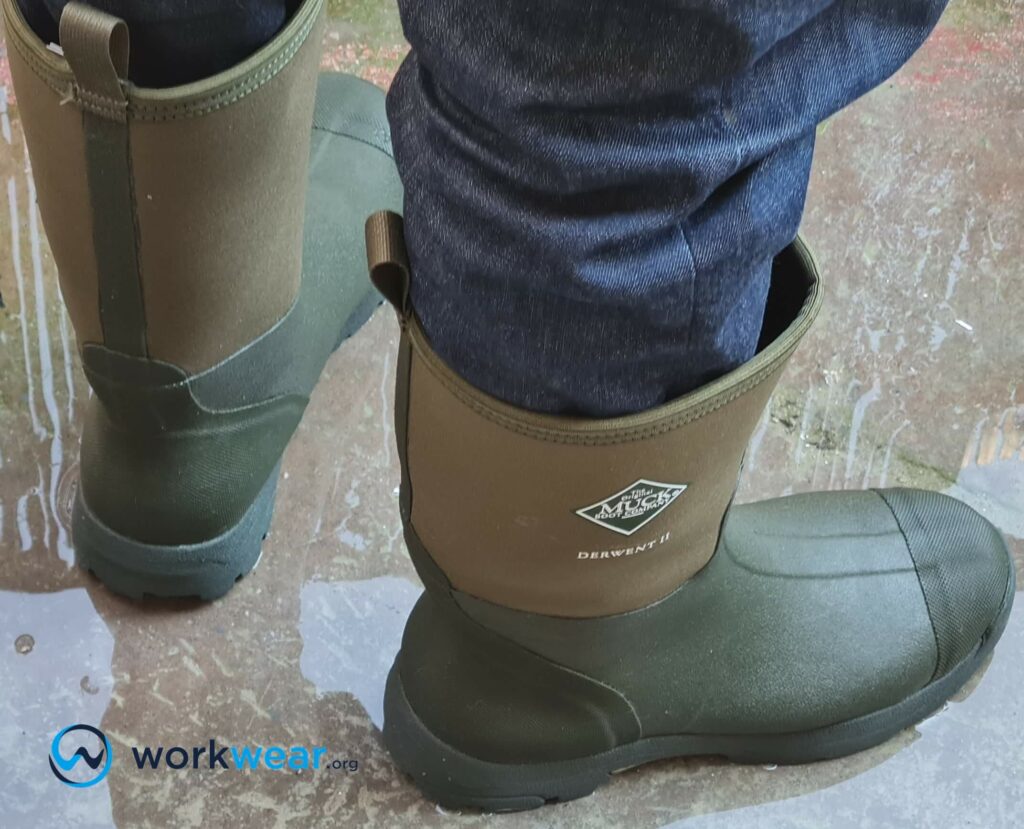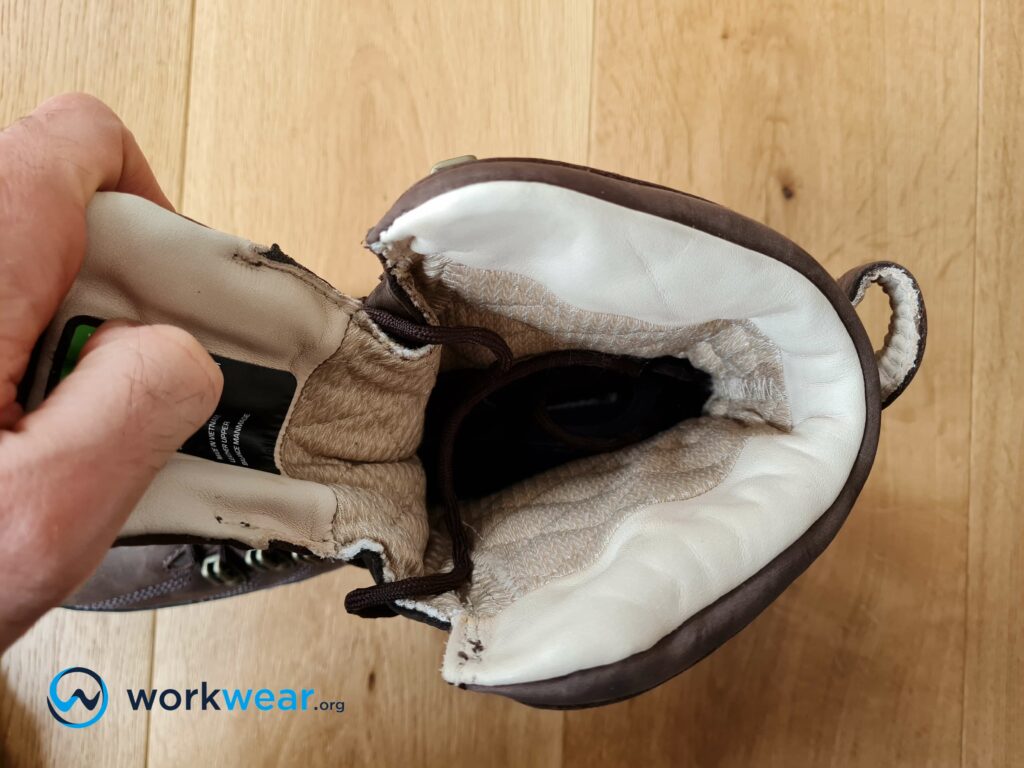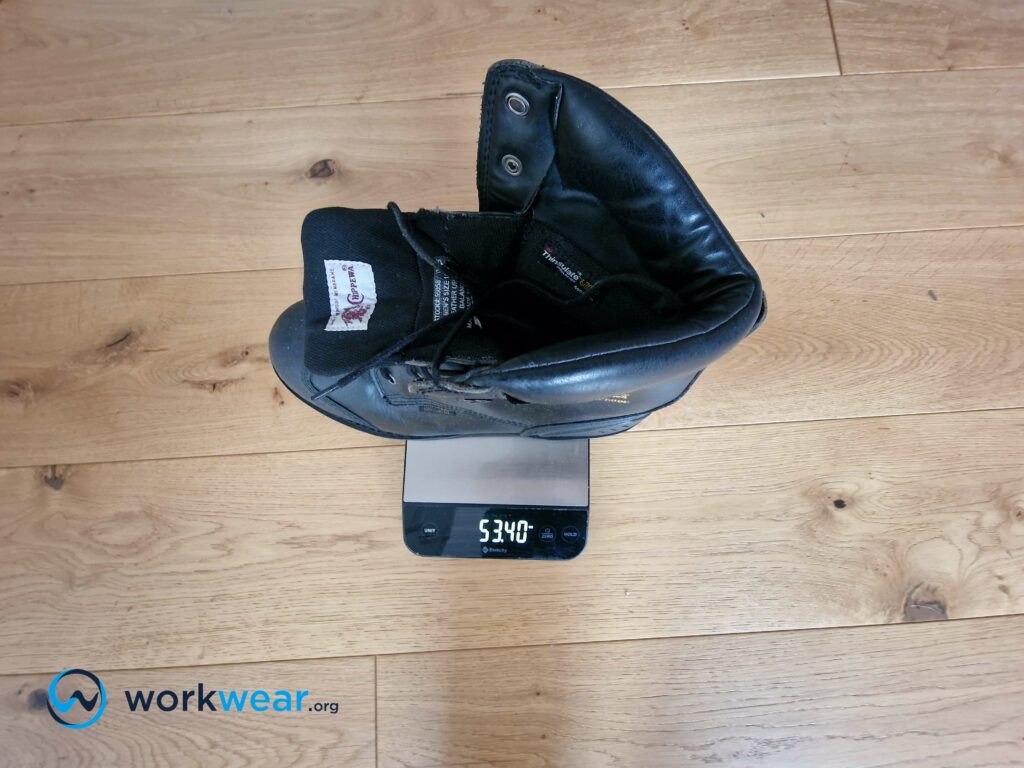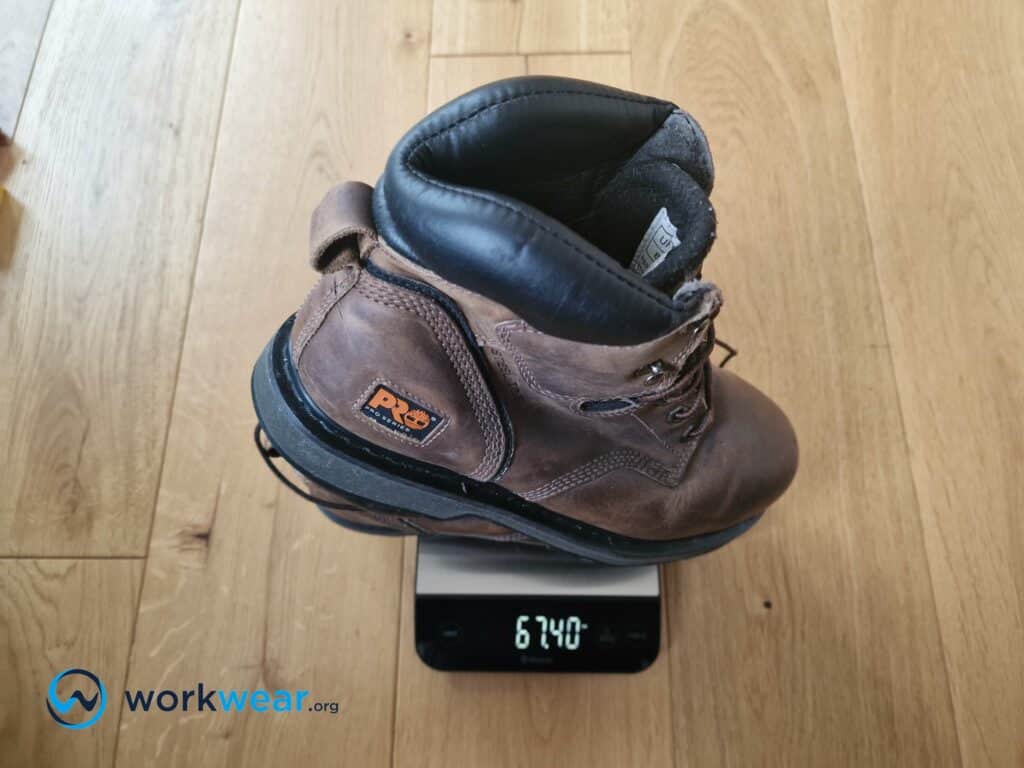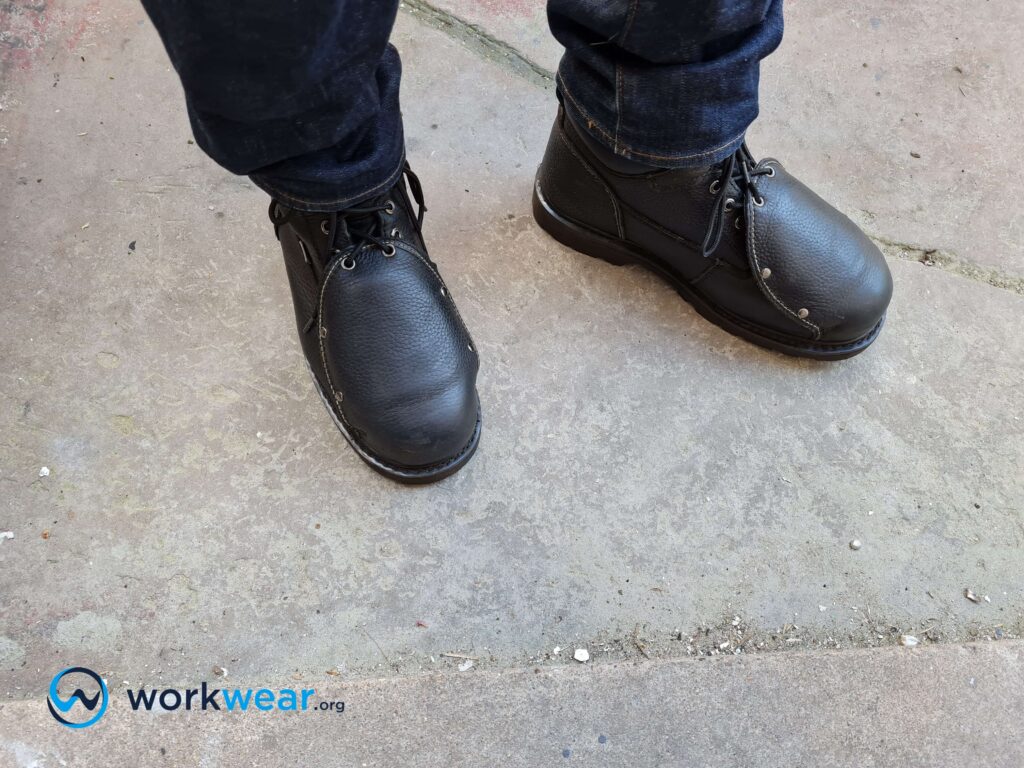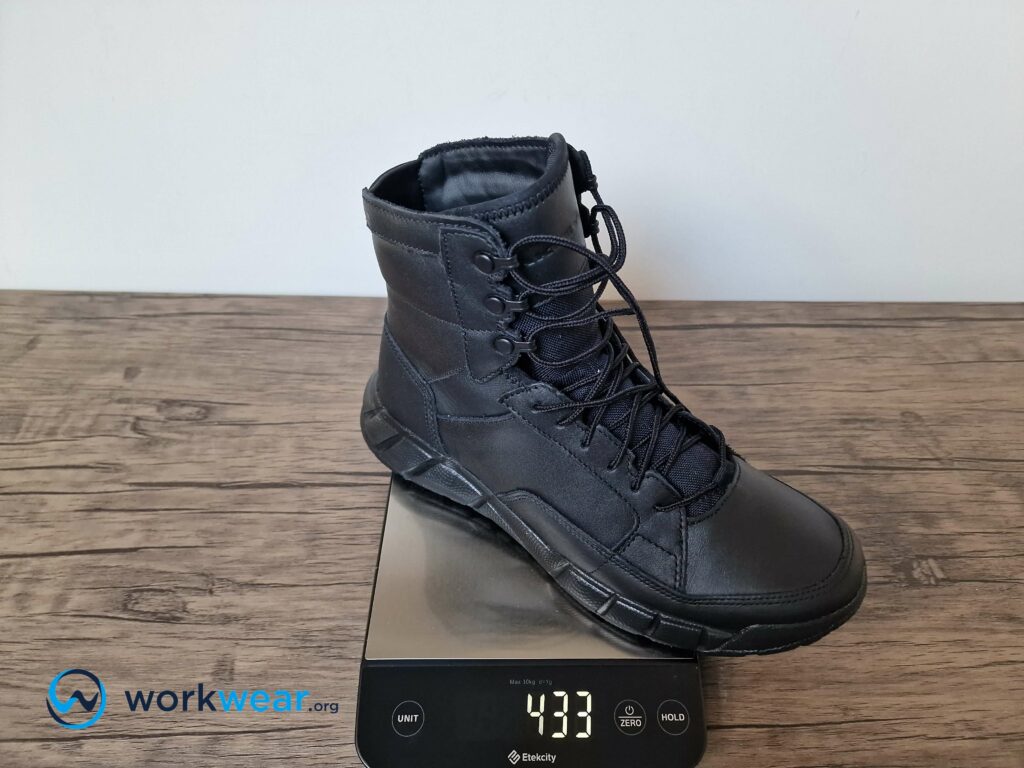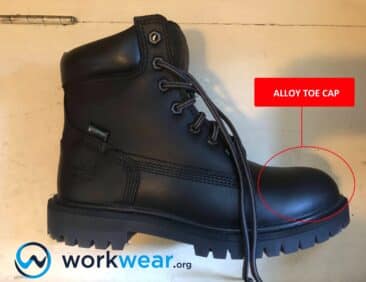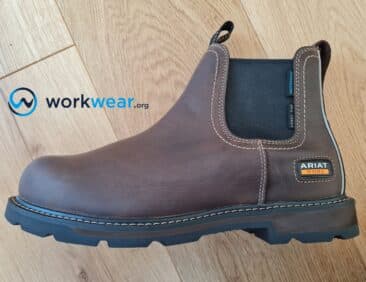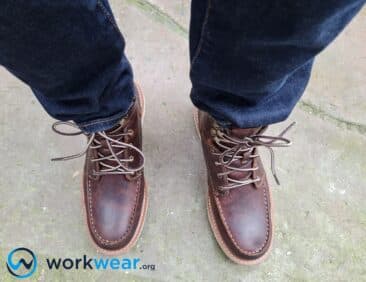Work Boots Weight – Our Study and Findings
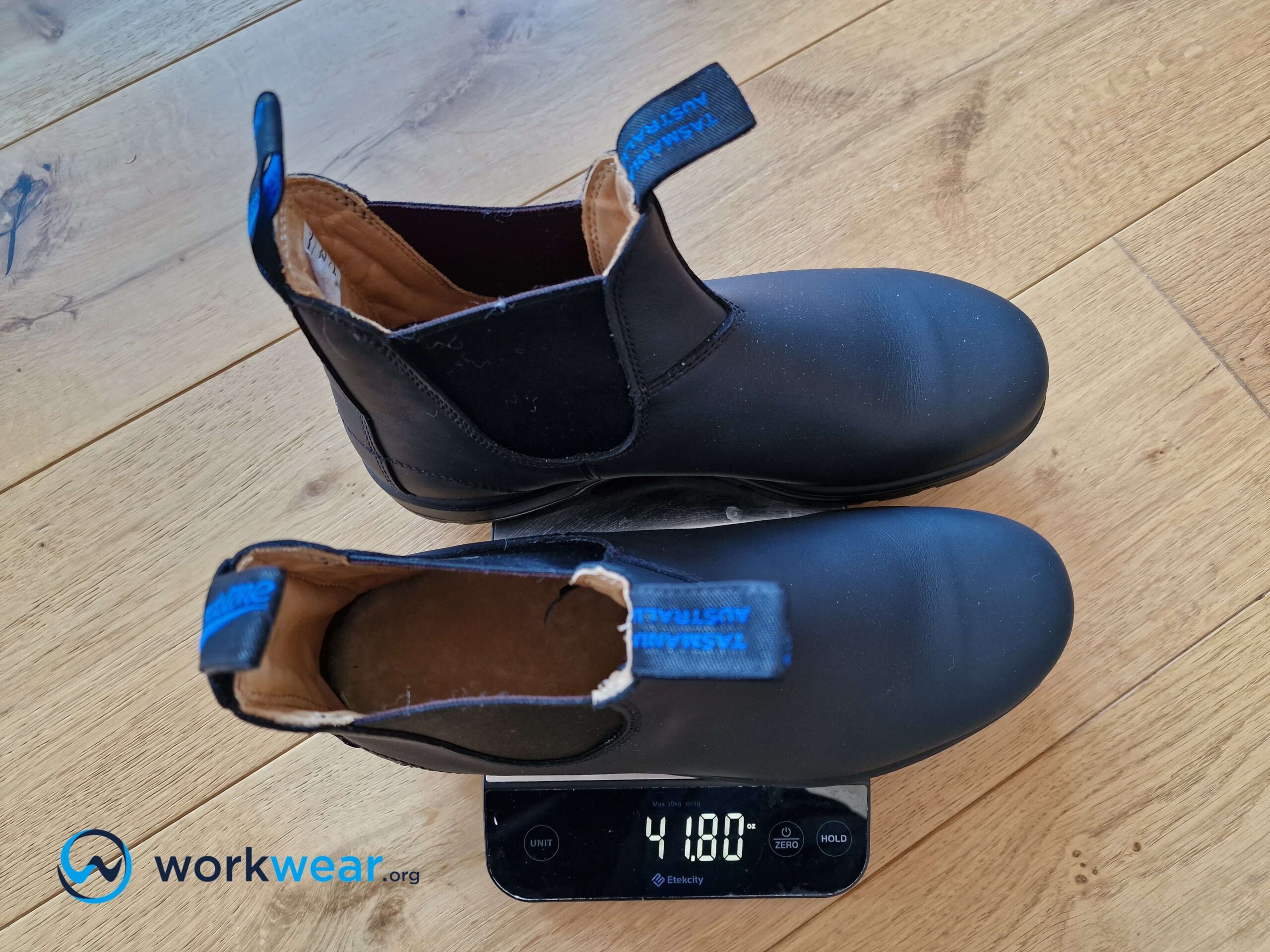
Many factors determine the comfort level of work boots, and one of the most important ones is their weight. Not surprisingly, we are often asked what the optimal weight of work boots should be – which can provide comfort without compromising on other important features such as safety.
The article covers all you need to know about the weight of work boots. We have conducted in-house research based on 1058 pairs of work boots, 208 of which we had the chance to wear, test, and weigh ourselves. We estimated the average weight of work boots and their range across all categories. Recognizing that different work boots have different purposes and are used in different environments, we have also calculated the average weight figures (and their respective range numbers as well) of nearly all work boots types from logger to tactical.
Key Takeaways
Work boots have different styles that come in widely varying weight ranges. Several factors, including the material of the upper, boot height, comfort enhancements, safety features, and sole structure, affect the weight of work boots.
Based on our testing experience, the average weight of work boots is 3.2 lbs. across all categories or styles. This weight starts at 1.9 lbs for the most lightweight tactical boots we tested, up to 6.7 lbs for a heavy-duty, 8-inch logger boot.
The types of work boots that generally have lighter weights are soft-toe boots, those with short shafts, non-insulated boots, and boots made with synthetic materials (not genuine leather).
The heaviest work boots are logger boots, steel-toe boots, and metatarsal boots. These types have rugged construction to keep up with equally tough work settings and are mostly fitted with metallic safety enhancements that considerably increase boot weight.
The average weight figures for work boots give general ideas on how each boot style will weigh, which can affect foot comfort and performance. It’s worth noting that the weights can vary a lot, depending on certain factors, such as the boots’ materials, construction, and height.
How Much do Work Boots Weigh?
Work boots’ weights vary depending on their styles and materials, with the average weight across all categories being 3.2 lbs.
The weight range of work boots starts from 1.9 lbs. (for tactical boots, specifically the Oakley Light Assault Boot) to 6.7 lbs.- which is the weight of the Chippewa Aldarion Logger Boot. The average weight ranges of different categories or styles of work boots are given below.
| Work boot type |
Average (lbs) |
Range (lbs) |
|---|---|---|
| Logger |
4.1 |
3.9 – 6.7 |
| Steel toe |
4.1 |
3.7 – 4.5 |
| Composite Toe |
3.2 |
2.9 – 3.5 |
| Wellington |
3.1 |
2.8 – 3.4 |
| Chelsea |
3.1 |
2.9 – 3.5 |
| Moc toe |
2.9 |
2.4 – 3.1 |
| Soft toe (non-tactical) |
2.6 |
2.6 – 3.5 |
| Tactical |
2.5 |
1.9 – 2.9 |
| All categories |
3.2 |
1.9 – 6.7 |
Factors that Affect Work Boot Weight
Materials used on the upper
The materials used on the upper can significantly affect the weight of work boots.
For example, two boots with the same 6-inch height may look similar, but their weight can greatly vary because of their uppers’ materials. The one with an upper made entirely of thick leather will typically weigh much more than the one with nylon sections. Even the hardware used on the eyelets affects the boots’ weight, with metallic components weighing more than plastic ones.
Height
Height will also have an impact on work boots’ weight.
Tall boots will generally be weightier than shorter ones since they use more materials to compensate for the enhanced upper.
However, this comparison isn’t set in stone, as there are instances when tall boots can be lighter than their shorter counterparts. For example, this can be seen when comparing an 8-inch, soft-toe tactical boot much lighter than a 6-inch steel-toe boot with a metal shank and midsole.
Safety enhancements
The enhancements that improve foot safety can impact how much the work boots will weigh.
Safety toe caps protect the toes against being crushed by heavy items, but they add to the boots’ total weight. Work boots with steel or composite toes are generally heavier than soft boots, especially if they have other enhancements, including a metallic midsole and shank.
Comfort features
Features that improve foot comfort can also weigh down work boots.
Insoles that are heavily cushioned add softness and can also increase the boot’s weight.
Insulated boots can also be weightier than non-insulated ones, with thick insulation materials adding considerable bulk to the footwear’s structure.
It’s worth noting that not all insulated boots are exceptionally heavy because some have lightweight insulation materials – such as 3M Thinsulate Ultra.
Sole structure
Work boots with thick, heavy-duty soles tend to be heavier compared to the ones with thinner soles.
However, this is only sometimes the case, as the materials used for the soles also have varied weights. It’s easy to assume that a work boot with thick PU soles weighs more than the option with a thinner rubber sole – but the opposite may be true because PU is generally more lightweight than rubber.
Which Types of Work Boots are Lighter?
Soft Toe Boots
Soft-toe boots are significantly lighter than safety-toe work boots.
The safety toe caps add considerable weight to the boots, making them more protective and heavier than the options without these safety enhancements.
Short Boots
Work boots with short shaft heights (6 inches or shorter) are made with fewer materials than those with taller designs.
The shorter structures are more lightweight than tall boots, making them ideal for all-day walking since they don’t drag heavily on the feet.
Non-Insulated Boots
Insulation materials are some of the enhancements that add significant weight to boots. This is especially true for work boots with higher insulation weights, such as those with 400 grams (or more) of insulation material.
Non-insulated boots don’t have the bulk of added insulation, so they’re much lighter than their insulated counterparts.
Boots Made from Rubber and Other Synthetic Materials
Rubber boots and those made with other synthetic materials are often lighter than those made with genuine leather, which tends to be thicker and heavier.
The solid profile of real leather adds considerable bulk to boots and makes them much weightier. However, it’s worth mentioning that not all boots made with synthetic materials are more lightweight than leather work boots. For example, tall rubber boots with thick soles may come out heavier than leather boots with mesh sections on the upper and lightweight PU soles.
How Much Do Work Boots With Composite Toe Caps Weigh?
Composite toe caps guard the toes, so they won’t be injured easily if something heavy rolls or falls on top of the feet. They’re made with non-metallic materials that are strong enough to shield the toes so they won’t be crushed by compression or impact threats.
Naturally, composite toe boots weigh more than soft toe boots, with an average weight range of 3.2 lbs. depending on different factors, including height, size, and style.
How Much Do Work Boots With Alloy Toe Caps Weigh?
Alloy toe caps are approximately 30-50% lighter than steel toes (which have an average weight of 4.3lbs.).
Work boots with alloy toe caps feel more lightweight than steel toe boots, which can drag heavily on the feet – especially when worn for a long time. The alloy toes are also thinner than steel, so they leave more room for the toes to wiggle from time to time comfortably.
How Much Do Insulated Work Boots Weigh?
The total weight of insulated boots will depend on the weight of the insulation material that’s built into the interior.
The average weight of insulated boots ranges from 4 to 6 pounds depending on the insulation material’s added weight or volume.
Insulation may come from natural materials (such as Shearling fleece) or synthetic products (such as Thinsulate or Primaloft). The different insulation material weights correspond to the varying temperatures of the surroundings and activity levels. For example, 200 grams of insulation is ideal for work boots used for cold environments and high activity levels. On the other hand, insulation materials that weigh 800 grams or more are suitable for very cold conditions with low activity levels.
What are the Heaviest Types of Work Boots?
Logger Boots
It’s not surprising that logger boots are some of the heaviest work boots.
They have tall shafts (averaging 10 inches or so) and are built with heavy-duty construction and thick leather to keep up with harsh outdoor conditions.
Logger boots also have raised heels and usually have rugged treads, which also add to the overall weight. These boots become even heavier when they’re insulated (such as the Chippewa Aldarion insulated boots weighing 6.5 lbs.), which is crucial when doing logging-related tasks outdoors in winter.
Steel Toe Boots
Steel toe boots offer superior toe protection against dangerous compression and impact. They’re suitable for hazardous work areas where heavy objects can accidentally fall on the feet, but they’re also much heavier than work boots without these safety toe caps.
Steel toes are heavier than composite toe caps, which may be better alternatives for work boots that will be used for hours of walking.
Metatarsal Boots
Boots with metatarsal guards are even heavier than those with steel toes.
The met guards are made from metallic or non-metallic materials fitted into the top of boots. These components increase the protection level against impact and compression hazards. They shield the top of the foot (where the metatarsal bones are located) that’s protected anymore by safety toe caps. Metatarsal boots have both met guards and safety toes, so they’re significantly heavier than non-safety toe boots.
Which is the Lightest Type of Work Boots?
Tactical boots
Tactical boots have lightweight profiles because they’re worn by professionals who need to be quick on their feet.
Their uppers are typically made with lighter types of leather and are often combined with nylon sections, increasing breathability while minimizing the boot weight.
Tactical boots without safety toes or insulation materials are even more lightweight, supporting improved agility for faster and more efficient responses to critical situations.
Personal Testing Experience
Here are our experiences while testing work boots with different weight ranges. The Iron Age Men’s Groundbreaker IA5016 Work Boot has steel toes that protect against serious crushing injuries from heavy objects. The sponge rubber wedge absorbs shock for improved comfort. This boot is built with ultra-tough Kevlar stitching and has metatarsal guards for extra protection, but they’re (unsurprisingly) quite heavy. The Under Armour Micro G Valsetz Mid Tactical Boot looks almost like sports sneakers and feels just as lightweight, thanks largely to the soft-toe design and an upper made with synthetic leather and textile panels. It feels exceptionally light on the feet and is one of the most comfortable boots (tactical and otherwise) we’ve tried – although the sole doesn’t feel very grippy, the structure isn’t waterproof. The Ariat Catalyst VX Defiant Gore-Tex Insulated Boot features GORE-TEX waterproofing for maximum protection against liquid penetration. It’s generously cushioned all throughout and has a rugged Vibram outsole that offers strong traction. This boot doesn’t have safety toes, but with 400 grams of insulation, it still turns out to be quite heavy.
Conclusion
Work boots come in different weights, influenced by their styles, materials, and functional enhancements. Based on our research, the average weight of work boots across all types and categories is 3.2 lbs per pair. The lightest work boots we have come across are tactical work boots and weigh 1.9 lbs (per pair), while the heaviest ones are a pair of 8-inch logger boots with a staggering weight of 6.7 lbs. When choosing work boots, the weight of work boots should be taken into account, along with other important factors (rather than just by itself), including safety features, sole traction, and water resistance.
FAQs
- Are heavy boots always uncomfortable?
- It depends on the boots’ other features. For example, lightweight boots may not feel heavy, but if they don’t have ample cushioning or are made with stiff leather, they can cause foot pain. On the other hand, heavy boots with strong shock absorption are generously padded and showcase flexible uppers that may feel much more comfortable than more lightweight options.
- Does insulation make boots very heavy?
- Only sometimes. Naturally, work boots with higher insulation weights (more than 400 grams) will feel heavier than non-insulated boots. However, boots that use low-profile insulation – such as Primaloft or Thinsulate – tend to feel lighter than those with bulky insulation.
- Are composite toe boots always lighter than steel toe boots?
- They often are, but there are some cases when composite toe boots are heavier than the ones with steel toes. For example, a composite toe work boot with metallic hardware, thick leather upper, and rubbed lugged outsoles can feel heavier compared to a steel toe boot that’s built with a synthetic upper, plastic hardware, and PU soles.
- Can lightweight boots be used in hazardous conditions?
- Yes, only if their materials provide high protection against safety threats in the work environment.
678+
Products Reviewed
24+ Years
Combined Experience
500+ Hrs
Field Testing
